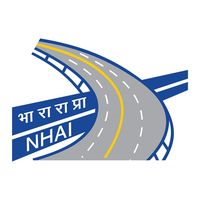NHAI's Strategic Initiatives for Infrastructure Safety and Efficiency
July 4, 2024, 9:41 pm

Location: India, Delhi, New Delhi
Employees: 1001-5000
Founded date: 1988
Total raised: $4.83B

Location: Argentina, Autonomous City of Buenos Aires
Employees: 10001+
Founded date: 1967
The National Highways Authority of India (NHAI) is at the forefront of enhancing infrastructure safety and efficiency through a series of proactive measures. One such initiative involves the removal of vegetation beneath the iconic Punalur Bridge in Kerala, a vital link connecting different parts of the state. By clearing the vegetation under the bridge, NHAI aims to bolster its structural integrity and ensure the safety of both vehicular traffic and pedestrians. This move underscores NHAI's commitment to maintaining critical transportation links and promoting the longevity of essential infrastructure.
Furthermore, NHAI has inaugurated a specialized cell dedicated to evaluating detailed project reports (DPRs) for national highway projects. This cell is tasked with scrutinizing technical feasibility, financial viability, environmental impact, and regulatory compliance of highway developments across the country. By centralizing the review process, NHAI seeks to expedite project approvals, enhance transparency, and optimize resource allocation for infrastructure projects.
These strategic initiatives highlight NHAI's proactive approach towards infrastructure development in India. By leveraging technological advancements and best practices in project management, NHAI aims to streamline project execution timelines and mitigate delays commonly associated with infrastructure initiatives. The establishment of the DPR review cell demonstrates NHAI's commitment to systematic planning, rigorous project assessment, and adherence to high standards of engineering and environmental sustainability.
In conclusion, NHAI's efforts to remove vegetation beneath the Punalur Bridge and establish a specialized cell for project report evaluation signify a significant step towards enhancing infrastructure safety and efficiency in India. These initiatives align with NHAI's broader mission to strengthen infrastructure capabilities, support economic growth, and ensure the long-term sustainability of national highway networks.
Furthermore, NHAI has inaugurated a specialized cell dedicated to evaluating detailed project reports (DPRs) for national highway projects. This cell is tasked with scrutinizing technical feasibility, financial viability, environmental impact, and regulatory compliance of highway developments across the country. By centralizing the review process, NHAI seeks to expedite project approvals, enhance transparency, and optimize resource allocation for infrastructure projects.
These strategic initiatives highlight NHAI's proactive approach towards infrastructure development in India. By leveraging technological advancements and best practices in project management, NHAI aims to streamline project execution timelines and mitigate delays commonly associated with infrastructure initiatives. The establishment of the DPR review cell demonstrates NHAI's commitment to systematic planning, rigorous project assessment, and adherence to high standards of engineering and environmental sustainability.
In conclusion, NHAI's efforts to remove vegetation beneath the Punalur Bridge and establish a specialized cell for project report evaluation signify a significant step towards enhancing infrastructure safety and efficiency in India. These initiatives align with NHAI's broader mission to strengthen infrastructure capabilities, support economic growth, and ensure the long-term sustainability of national highway networks.

